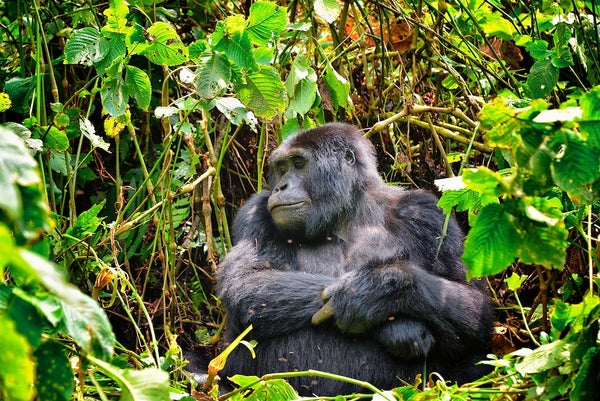This article was published in Scientific American’s former blog network and reflects the views of the author, not necessarily those of Scientific American
Are the world’s researchers spending too much of their time focusing on great apes? That’s a question raised by a paper published this month in Frontiers in Ecology and the Environment. The results may (or may not) surprise you.
To answer this question, a team of researchers looked at all of the published research that had been conducted in 565 national parks and protected areas in Africa and Asia. They found that out of 43,635 studies conducted in those regions, an astonishing 31 percent focused on gorillas, chimpanzees, bonobos and orangutans.
Taken further, a full 71 percent of those studies focused on mammals, including the great apes. All other life forms—such as insects, reptiles and plants—were, by far, disproportionately unrepresented.
On supporting science journalism
If you're enjoying this article, consider supporting our award-winning journalism by subscribing. By purchasing a subscription you are helping to ensure the future of impactful stories about the discoveries and ideas shaping our world today.
The researchers also calculated which parks received the most attention. Four sites alone—all primary ape habitats—accounted for nearly 5,000 studies. In stark contrast, a full one-third of parks and protected areas in Africa and one-fifth of the sites in Asia appear to have never been the subject of scientific research.
Those parks, as you might guess, don’t contain great apes.
The results surprised the research team. “We didn’t expect there to be such strong biases in the allocation of research effort toward both a small subset of protected areas and a small subset of biodiversity,” says lead author Andrew J. Marshall of the University of Michigan, who himself has published several papers on orangutans and chimpanzees. “The bias towards a small number of protected areas means we know next to nothing about most protected areas.” He was also struck by the number of studies on mammals and apes. “These are a small proportion of total biodiversity in the tropics, but they attract the lion’s share of research effort.”
Marshall says the study isn’t a condemnation or a call for everyone to drop what they’re doing. “I think it would be wrong to interpret these results as saying we should stop working in or writing about large, relatively well managed protected areas,” he says. “These areas are crucially important. But in many cases one might make a more positive impact by studying a poorly known species or working at an unstudied site than by joining an existing team working at a well-studied site.”
He added that this examination helps to show how much information we’re missing from the scientific literature, and that might provide a way for researchers to move forward in filling those gaps. “As Donald Rumsfeld famously said in another context, there are ‘unknown unknowns,’ things we don’t know that we don’t know,” he says. “In the conservation context, this is disconcerting.”
The disconcertion comes from the fact that habitats around the world face ever-increasing threats. “The future of tropical forests is that they are becoming increasingly fragmented,” Marshall says. “This means that animals will live in progressively smaller and smaller patches of forest.” He says our over-reliance on information from the largest, most well-protected areas—which tend to be ape habitats—means that what we know today won’t be as useful for other habitats in the future. “Over time our knowledge will be less and less applicable to the conditions that most individuals face,” he says. “Simply put, our knowledge is very limited, quite biased, and will be less and less applicable to conservation over time.”
Meanwhile, how do we preserve so-called protected areas that have never been adequately studied? “At the simplest level, the lack of even the most basic information about many protected areas means that we are probably missing opportunities to do effective conservation in them,” Marshall says. “We do not know what species these protected areas contain or what the local threats or conservation opportunities may be. Ignorance of these basic facts means that our conservation prioritization is based on an incomplete knowledge, and is therefore less effective than it could be.”
Obviously research (not to mention journalism) has always had a tendency to focus on charismatic megafauna such as mountain gorillas and chimpanzees. These creatures strike a chord with both scientists and the general public. In many cases, charismatic species and their plights help to draw attention to larger issues, such as climate change, poverty, pollution and deforestation. But as Marshall says, we need to know where researchers are working and why they chose to work in the places that they do. Mapping that out can help to reveal what we’re missing so it doesn’t disappear while nobody is looking.
